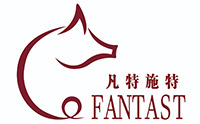13
2023-02
Process nutrition and quality management of chicken powder
author:
source:
Feed Industry Information Network
Animal protein raw materials
Animal protein raw materials include chicken meal, pork meal, fish meal, meat and bone meal, animal by-products, blood meal, feather meal, insect protein, etc.
The characteristics of animal protein raw materials are high protein content, generally 40% -85%, good quality, relatively balanced amino acid composition, and containing growth promoting factors for animals; Low carbohydrate content, generally without crude fiber; High crude ash content, high calcium and phosphorus content, reasonable proportion, and high utilization rate; Rich in vitamins. The disadvantage is high fat content, easy oxidation and rancidity, and not suitable for long-term storage; Serious adulteration.
Chicken powder
Chicken powder is a type of meat powder, mostly made from by-products or leftovers that are not suitable for human consumption after broiler slaughter, as well as residual minced meat, skin, internal organs, and miscellaneous bones from meat processing plants. It is a powdered feed made by high-temperature steaming and sterilization, pressing and defatting, drying and crushing. Currently, there is no national standard for chicken powder for pets in China.
The AAFCO standard for chicken meal is that chicken meal is a dried product composed of clean bone or boneless meat and skin, made from whole parts or combinations of poultry meat, excluding feathers, heads, feet, and internal organs, suitable for use in animal food.
Production process of chicken powder
Raw material crushing → high temperature steaming → extrusion → cooling → crushing and screening → packaging → storage
Composition ratio diagram of fresh chicken and chicken powder
Fresh chicken:

Chicken powder:

Key points for quality control of chicken powder
① Control of raw material sources
A Determine qualified suppliers, establish a list of qualified suppliers and a supplier assessment system, and evaluate them annually.
B Suppliers should have legal qualifications and complete qualification documents.
C Raw materials are purchased according to their classification levels, usually consisting of frozen fresh products. The production date is controlled within the last week and batch management is implemented. The main raw material varieties include chicken minced meat, chicken skin, and chicken skeleton.
D After entering the factory, the raw materials need to be stored in a refrigerated warehouse. Implement the first in, first out principle to ensure the supply of production lines.
E Establish a raw material incoming inspection system, and all purchased raw materials can only be stored after passing the inspection. The inspection items include: product freshness, appearance for contamination, and checking whether the inspection and quarantine certificate procedures for each batch of raw materials are complete.
② Production process control
A The raw material crushing process confirms that the raw materials are kept in a fresh state, without thawing or spoilage, and are controlled in a reasonable crushing state during the crushing process.
B The high-temperature cooking process ensures that the pressure inside the cooking tank is 0.25 megapascals and the cooking time is 2 hours.
E Reasonably adjust and control the tightness of the screw during the extrusion degreasing process to ensure that the fat content of the extruded product is controlled within 12%.
D The cooling process uses a closed countercurrent cooler to cool the material, bringing the temperature of the material to room temperature.
E The crushing and screening process uses a sieve with a diameter of less than 4 millimeters for crushing. The grading sieve uses a sieve with a diameter of less than 3 millimeters for screening.
F The entire production process adopts a continuous non-stop flow production process to prevent personnel from coming into contact with materials and avoid microbial contamination caused by human factors.
③ Preservation of raw materials and finished products
Raw materials and finished products should be stored separately and labeled to avoid mixing and contamination. It is prohibited to place raw materials outdoors. The storage workshop requires shade, ventilation, dryness, and cleanliness. If fresh raw materials cannot be processed in a timely manner, they should be stored in a cold storage.
Quality and Safety Management of Chicken Flour
A Establish a "On site Quality Inspection System" for production, equip dedicated on-site quality control personnel, conduct necessary monitoring of the production process, and keep relevant records.
B Establish an enterprise inspection system, recruit qualified full-time laboratory technicians, conduct necessary testing on products and raw materials, and keep relevant records.
C Enterprises should establish dedicated warehouse management positions and establish a sound "Warehouse Management System". Warehouse managers should conscientiously implement relevant systems and keep records.
D Establish a product sample observation system for the enterprise, and quality control personnel should keep relevant sampling and sample retention records.
E Establish a 'Raw Material Procurement Management System' for the enterprise, and procurement personnel should comply with the system requirements and strictly implement them.
F Establish a personnel hygiene management system for the enterprise, and ensure that employees conscientiously implement it.
Quality inspection and control of chicken powder
The company establishes and improves relevant quality inspection management systems. Finished products must undergo quality inspection before leaving the factory, and can only be shipped if they pass the inspection. Raw materials must be inspected and qualified before they can be stored in the warehouse.
The finished product testing items include nutritional indicators and hygiene indicators.
Nutritional indicators: crude protein, crude fat, volatile basic nitrogen, acid value.
Health indicators: Salmonella, coliform bacteria, total bacterial count, heavy metals, polychlorinated biphenyls and other indicators with serious hazards.
Identification of chicken powder adulteration
The phenomenon of chicken powder adulteration is very serious, commonly seen in hydrolyzed feather powder, hoof, horn, leather powder, etc. The most direct method of identifying adulteration is sensory examination. Check the color, odor, texture, particle size, and other characteristics of chicken powder. Stereoscopic microscope is the most commonly used sensory detection tool, which can identify most adulterated substances. Chicken powder, feather powder, blood powder, etc. are very obvious. Chicken powder is irregular, semi transparent, golden yellow in color, and has hard granules; Feather powder is small, bamboo like, smooth, transparent fragments of varying lengths.
Sensory judgment: High quality chicken powder is golden yellow to light brown or dark brown in color. It has a fresh meat flavor and a grilled meat aroma. If it deteriorates, it will have a sour and rancid taste; The calcium content of normal chicken powder products is about 2.2 times the phosphorus content, and there is a possibility of adulteration due to abnormal proportions; The amino acid balance can be used to determine whether chicken powder is adulterated. The content of arginine, glycine, and proline in normal chicken powder is relatively high. Arginine content is above 4%, glycine content is around 8%, and proline content is around 5%. The cysteine content is relatively low, around 1%, while feather powder has a higher cysteine content. If the cysteine content in chicken powder is abnormal, it may be mixed with feather powder.
Lastest Literatures
2023-04-03
The relevant characteristics of enzyme preparations and their application in animal feed
Feed contains various anti nutritional factors, which can limit the release of nutrients in the feed. In addition, the lack or absence of digestive enzymes in the animal's gastrointestinal tract can lead to a lower digestion rate of feed, affecting the utilization rate of feed and hindering the healthy growth of animals.
2023-02-13
Process nutrition and quality management of chicken powder
Animal protein raw materials include chicken meal, pork meal, fish meal, meat and bone meal, animal by-products
2022-12-14
The mechanism of action of anti nutritional factors and their effects
Antinutritional factors mainly reduce the body's utilization of nutrients such as protein and energy by consuming more endogenous proteins
2022-12-12
Design and precautions of feed formula
Feed products should have the following characteristics: nutrition, physiology, marketability, safety, economy, and practicality.



